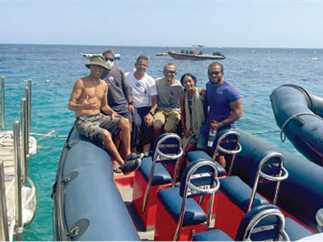I was recently on a red sea liveaboard with my partner and two friends. Me and my partner have AOW and 50/30 dives respectively, our two friends had just gotten their open water recently with no further dives outside training. Our friends decided to do their AOW at the beginning of the liveaboard.
On the second day, our friends were going to do their deep and wreck adventure dives on two dives on a wreck that sits at 20-30m depth. There was a lot of current that day, we were a group of 9 divers.
The instructor made it clear in the debrief that:
- The two divers under instruction should follow him closely, me and my partner after, and the other 5 divers behind.
- Due to the current, we were to descend and ascend on the anchor line, current would not be an issue once on the wreck itself.
We splashed in, and made our way through the wreck. The anchor line was on one end of the wreck, he guided us all towards the other end, which was relatively far, with two or three penetrations on the way.
There were other groups of divers on the wreck making staying in line a challenge, and the other 5 divers in our group weren't respecting the order (I think because they were taking pictures and didn't want the beginners in front of them to disrupt visibility).
Suddenly, I find myself and my partner in front of our friends in an open area of the wreck opposite side of the anchor line. When I signal to them to get back in front, one of them signals to me he has 60 bar left. We are at 25 meters and the rest of the group, including the instructor have turned around and penetrated the wreck through a different spot than the one we came, which is dark and narrow enough we'd have to enter it single file. I see the fins of one the divers in our group inside. At this precise moment, my partner signals she is having trouble with her mask leaking. I signal to my friends to wait one moment. She readjusts the mask and tries to clear it, which seemingly doesn't work. After a couple more attempts, through which she is getting nervous, it finally clears (she later told me water went up her nose hence the struggle).
I look back at the place where the group went, I see nothing. I illuminate with the flashlight, darkness at the end of a tunnel. I ask my friend how much air he has. 50 bar. It has been a minute since I last saw the last person of our group, and more since I last saw the instructor. My friend's face with low air reads like anxiety. There are other boats above and I don't trust them to be competent at deploying their DSMB without shooting to the surface.
I decided to abort the dive. I signal to the other 3 "abort, we go up as a group and do a safety stop together".
We start ascending, but the 4th diver (partner of the friend low on air) is still trying to look for the instructor to no avail, at this point there are no other divers there. I repeat the signals to abort and go up, she ends up complying. We start ascending slowly from 25m to 20m, where the top of the wreck ends, and there is indeed a lot of current. I start to prepare the DSMB to shoot it ASAP so the boat can see it drifting while we do the safety stop.
Suddenly, out of nowhere, I feel my leg being pulled down aggressively. The instructor has realised we were missing, come back for us, and seen us above him. He yanks all of us down. I signal to him my friend is now on 40bar. He is visibly angry.
He leads us all to the anchor through a different path that avoids the current but without penetrating. On the anchor line, my friend signals that he is out of air as soon as the safety stop starts. He ends up doing the safety stop on the instructor secondary, and surfaces with the needle below 10 bar.
On the boat, the instructor is furious telling me that who am I to make a decision like that, that it was super dangerous to try to ascend with the current like that, that we could have been lost at sea. I try to tell him there is no way I'm leading my friend down a dark hole at 25m depth with 50 bar, he tells me we should have just waited for him.
What was I supposed to do? I've been thinking this over and over and the only other reasonable alternative would have been for me to give him my secondary instead of ascending (I had 120 bar at this point) and wait for the instructor there, though this seems to go against the training I received




